Eat like your favorite literary heroines with this menu from Cara Nicoletti, author of Voracious.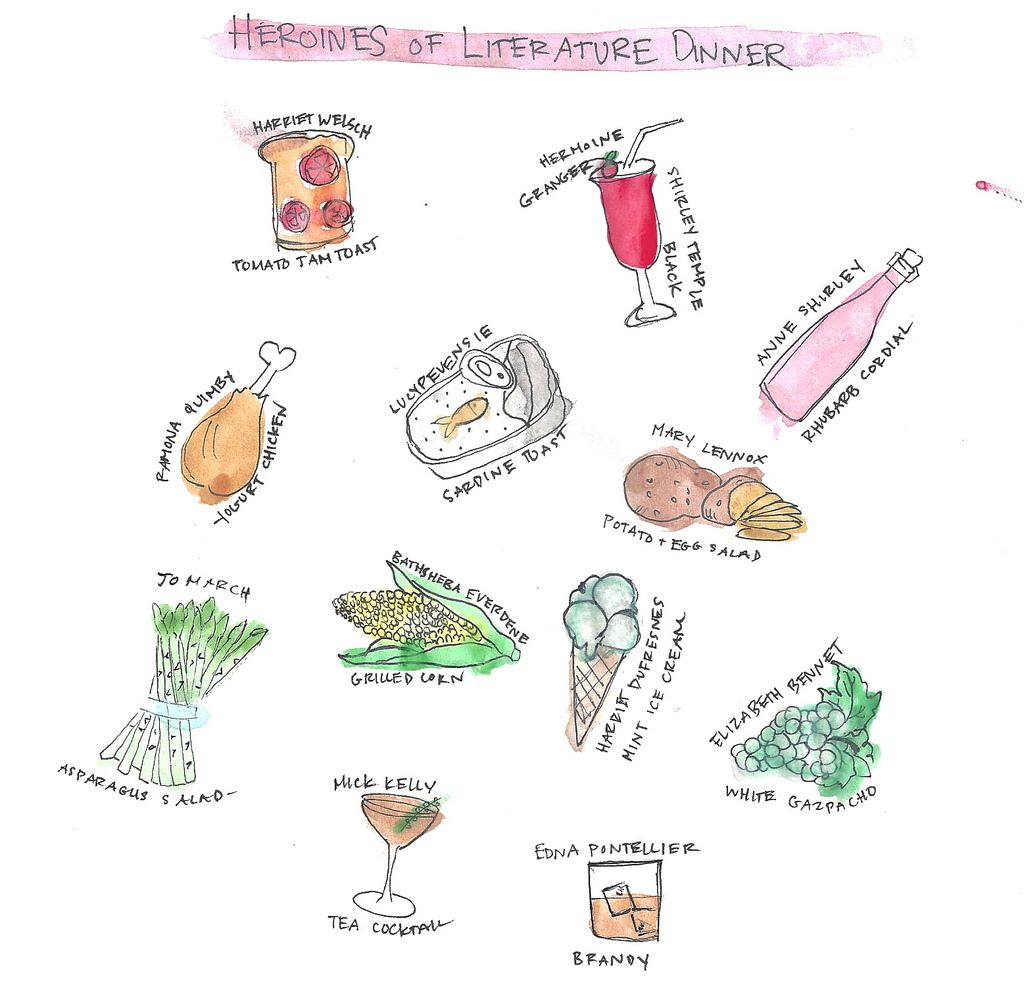
Before my book Voracious became a book, it was a blog. But even before that, it was a literary supper club that I hosted in my Brooklyn apartment.
I love throwing dinner parties, but preparing for them can be insanely stressful. I find that it helps to organize them around a specific theme—the more specific, the better. This menu here is inspired by some of my favorite heroines in literature.
Even with an overarching theme to guide you, it’s important to create a menu that’s cohesive and seasonally appropriate. Because of that, some of my favorite leading ladies didn’t make the cut (I don’t want to eat Scout Finch’s warm biscuits in August), but I’m eager to hear who you would include on your own literary heroines dinner menu—shout them out in the comments.
Cocktails

Poor Anne is always messing things up in the kitchen. She forgets to put flour in the cake and cheesecloth over the plum pudding, and most famously, she gives her bosom friend Diana red currant wine instead of a non-alcoholic raspberry cordial—which gets her absolutely smashed. This rhubarb cordial is a nice substitution, since rhubarb is still around in the markets—but won’t be for long.

There is a surprising lack of likeable teenage heroines in literature, but Mick Kelly is the exception. Like most real-life teenagers, she is broody and her moods are unpredictable, but she makes up for it with quiet empathy and a wicked imagination. This sweet tea and bourbon cocktail is a nod to the novel’s deep South setting, and to Carson McCullers, who put a lot of herself into Mick and sipped on boozy tea all day while she wrote.

It was hard to choose between Hermione and Luna Lovegood as the Harry Potter contingency of this menu, but Hermione has more than earned her place. She is naturally smart, but what I love is her insane work ethic—she puts in ten times more effort than any of her peers at Hogwarts, and it pays off. What would have become of Harry if Hermione hadn’t been there to correct his mistakes—like the time she catches him trying to add pomegranate juice instead of salamander to his strengthening solution in Potions class? (CLASSIC HARRY!) Here, as an ode to Hermione’s eagle eye, use pomegranate juice and pomegranate molasses to make homemade grenadine, and mix it into a grown-up Shirley Temple.
Appetizers
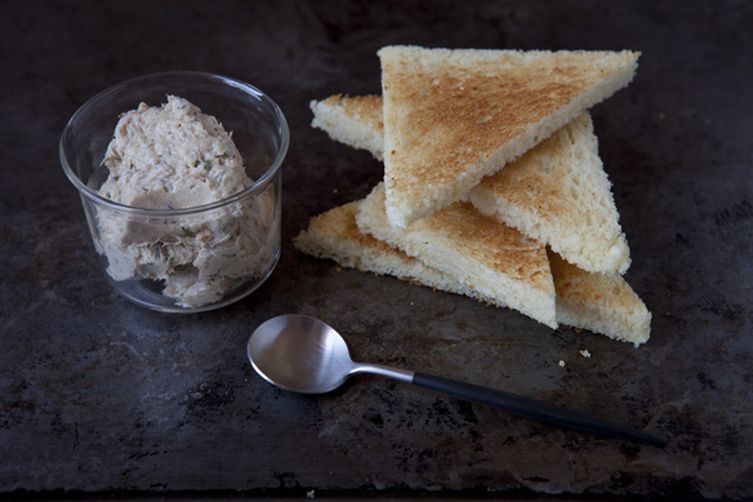
Without Lucy, The Chronicles of Narnia would never have happened. It’s she who discovers Narnia, where she shares a meal of sardines on toast with Mr. Tumnus. Lucy is the youngest of the Pevensie children, and perhaps because of this, she remains most faithful to Narnia throughout the series. Lewis meant her to be the perfect example of religious devotion, but I admired her more for her quiet bravery, loyalty, and unshakable belief in magic. Here, Lucy and Mr. Tumnus’s sardines on toast get dressed up—the sardines and butter are whipped together, along with a squeeze of lemon, before being spread on wedges of toast.
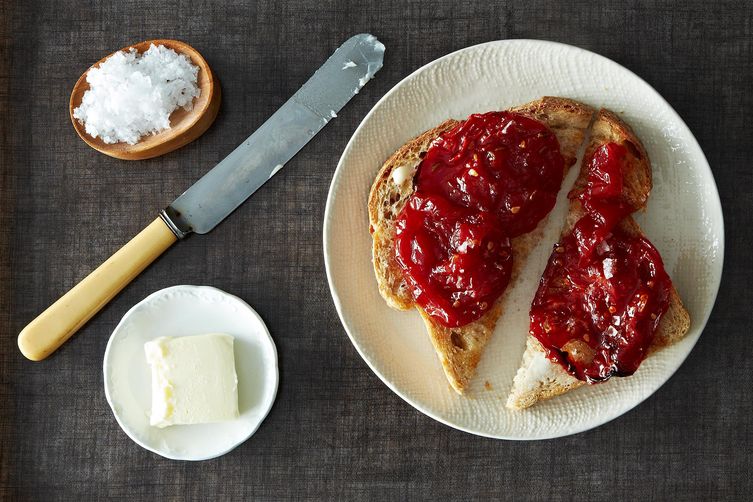
I was squeamish about tomatoes until I read about Harriet Welsch’s tomato sandwiches. Now, in the summer when tomatoes are at their peak, I eat them like apples and have her to thank. Harriet is not exactly the typical happy-go-lucky heroine of many children’s books—and that’s what I like best about her. Instead, she is hyper-aware of the world around her, adventurous and brave, smart, cruel, and insightful. Here, her tomato and mayo sandwiches get a sophisticated makeover. Rather than slather white bread with mayo, reduce some peak summertime tomatoes into a sweet and savory jam and spread it onto toast.
First Course

Hands down, bar none, Elizabeth Bennet is the reigning champion of cool women in literature. Instead of getting flustered in the face of mean old women and attractive, dismissive men, Elizabeth remains poised in the face of an insult. She meets every slight with a perfect, pointed comeback, and still remains classy. And she is funny! Even after two hundred years, her witty quips and astute observations make me chuckle. But no one eats anything in Pride and Prejudice because eating is a very un-Victorian thing to do. The only mention of food is something called “white soup,” which is made of pulverized almonds and jellied veal stock—not exactly a palate cleanser between courses. This white gazpacho, however, gets the job done. You’re welcome.
Main Course

Ramona is one of the most fully realized children in all of literature. She is smart and impulsive, a braggart and a worrier. She can be mean-spirited as quickly as she can be empathetic. She gets yelled at a lot and holds grudges and forgives. To read Ramona Quimby, Age 8 as an adult is to remember viscerally what it was to be eight years old—to fight with your sister and worry that your teacher hates you, to resent and love your parents in equal measure, and to feel embarrassment deep down in your guts. In this book, Ramona and her sister have to make dinner one night as a punishment. Trying to recreate one of their mother’s recipes, they marinate chicken thighs in banana yogurt and dump cayenne pepper all over them. This obviously isn’t right, but marinating chicken in yogurt is an easy and delicious way to keep it moist, even if it gets slightly overcooked. Good on you, Ramona and Beezus.

When I was eight years old, Jo March seemed very, very cool to me—maybe because, let’s be honest, her sisters aren’t really that cool. But as an adult, I am disappointed in Jo for ending up with Mr. Bhaer, because I don’t think that was really in her heart. (No, I’m not Team Laurie, I’m Team Spinster.) Alas, Louisa May Alcott could only be as radical as 1868 would allow her to be. In one of the most famous scenes in the novel, Jo tries to prove herself by cooking a giant meal for her family. Her goals are lofty, which is probably why the meal turns out so horribly. The lobsters are meatless, the asparagus is old, the blanc mange is lumpy, and the strawberries are sour. A little tip for your party—don’t boil the asparagus for an hour like Jo did, especially because it’s so delicious this time of year. In fact, don’t cook it at all—just shave it into thin strips for this salad. Crisis averted.

There is some dispute on whether Bathsheba Everdene is a feminist character or exactly the opposite. Whatever she is, I like her a lot. She is independent and determined, hardworking and brave. Her loyalty, though sometimes misplaced, is fierce—she paved the way for many of the feminist characters we see in modern literature (ahem, Hunger Games fans, Katniss’s last name is a different spelling of Bathsheba’s). This simple grilled summer corn with basil butter is for Bathsheba, who the men in Dorset dub “Queen of the Corn Market” because she is the only woman there negotiating the price of goods from her farm.
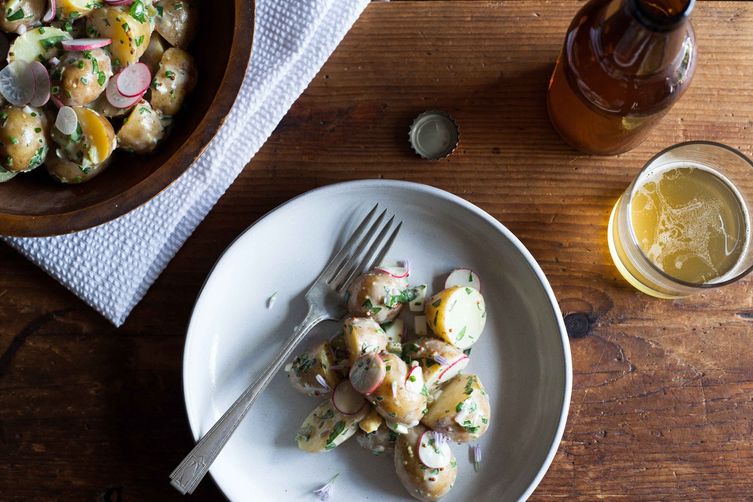
Novels of the mid-nineteenth and early twentieth centuries are littered with orphans—Mark Twain’s Tom Sawyer and Huck Finn; Lucy Maude Montgomery’s Anne Shirley and Emily of New Moon; the Brontë Sisters’ Jane Eyre and Heathcliff; Dickens’ Oliver Twist, Pip, Estella, and David Copperfield; Victor Hugo’s Cosette and Quasimodo; Little Orphan Annie, and, of course, Mary Lennox. Of all these orphans, Mary is the hardest to like, which is probably why I like her the best. She is a scrappy, sour, world-weary ten-year-old when we first meet her, but the garden she finds and nurtures back to life softens her and gives her patience. The meals Mary eats in The Secret Garden are epic, the most vividly remembered of any from the books I read as a child. One of the ones I wanted to try the most was the potatoes and eggs that she and Dickon cook by burying them in the earth and covering them in warm stones. In the interest of time and stress management, this potato and egg salad is made in your kitchen, but your guests will like it just as much.
Dessert
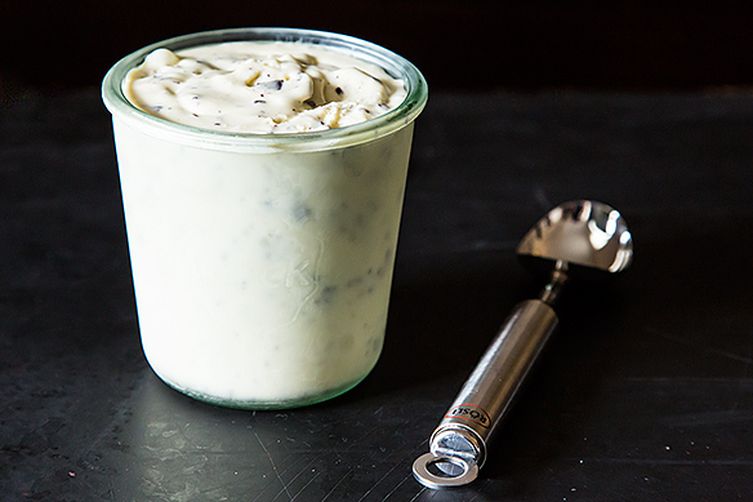
Harriet Dufresnes is a nine-year-old girl growing up in Mississippi, whose older brother, Robin, was found hanging from a Tupelo tree in her family’s backyard when she was just a baby and he was just nine years old. Harriet is part Scout Finch, part Caddy Compson, part Harriet Welsch, and somehow a character all her own—adventurous and compulsive, imaginative and deeply sensitive. She is hungry for love, but also for food, which her nearly catatonic mother never remembers to give her. When her housekeeper isn’t around to cook, Harriet has to beg her mother for food, but the best offer she ever gets is for peppermint ice cream—her mother’s favorite. It also happens to be quite literally one of the least warm (see also: coldest) foods out there. This is bad for Harriet, who craves sweaty, loud, family-filled tables and warm, nurturing meals. It’s good, though, for your guests, especially if your home gets as hot as my apartment does in August.
Digestif
Edna Pontellier from The Awakening by Kate Chopin | Brandy
I can’t give you a recipe to make the brandy that will help wash this meal down, but I do recommend that you toss it back like the badass Edna Pontellier, who drank hers “from the glass as a man would have done.”
Illustration by Cara Nicoletti; photos by James Ransom, Nicole Franzen (sardine butter), Mark Weinberg, and Eric Moran













See what other Food52 readers are saying.